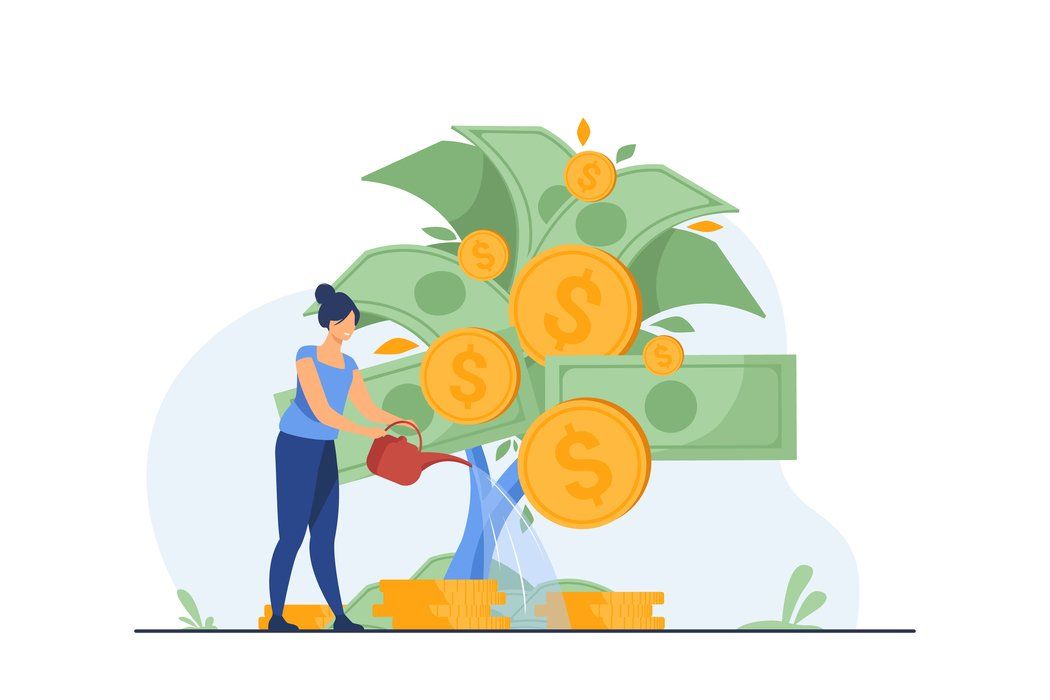Can Private Equity Make Money While Doing Good?

Image by pch.vector on Freepik.com
LPs can help avoid an impact investing debacle, with the right tools.
Demands on private equity (PE) and venture capital funds have gone from “financial returns-only” to include mandates to do good. If these ambitions are achievable, then limited partners (LPs) need to keep a close eye on the promised outcomes and adjust their risk management processes to this new paradigm.
Only then can LPs confidently say that they’re earning a profit and making the world a better place.
In a recent Fireside Chat, Wall Street Journal reporter Simon Clark described the problem covered in his recent book: “When companies and investors sign up for this broader stakeholder capitalism mission, big problems can emerge.”
Co-authored by Will Louch, Clark’s book chronicles how Arif Naqvi, CEO of Abraaj Group – the world’s then-largest emerging markets fund – raised billions in impact investment dollars from governments and institutional investors as he swindled away more than US$660 million. Naqvi was one of the most prominent voices in the impact investing world who promised that there’s “no trade-off between doing good and making money”.
In 2017, Abraaj oversaw approximately US$14 billion in assets under management as Naqvi raised money for a US$6 billion health care fund from investors like the Bill & Melinda Gates Foundation, Bank of America, the International Finance Corporation and the CDC Group. A short time later, the Gates Foundation couldn’t account for a huge sum of its investments; Abraaj filed for liquidation in the Cayman Islands in 2018. A year later, Naqvi was arrested in London based on a warrant from the United States Justice Department. He now awaits extradition to the US where he is facing up to 291 years in prison, if convicted.
The Abraaj story, albeit extreme and rare, requires soul searching from all PE stakeholders. How can investors who trust their capital to PE funds with ESG mandates avoid disappointing outcomes?
ESG is growing in PE, as is the related risk. But what is ESG?
Generally, ESG, which stands for Environmental, Social, and Governance, refers to a set of criteria for certain company operations which an investor uses to evaluate potential investments. It has become an essential component in limited partners and firms that hold private equity funds for real estate and other relevant investments.
Although before, ESG activities were only used as a PR strategy to attract the press and satisfy socially-involved employees, the situation has already changed today. Many limited partners and private equity firms have embraced ESG as an important factor in having great investment performance. Gone are the days wherein they see ESG initiatives as a mere risk mitigation tool due to its ability to create value in private equity. In fact, the lack of strategy for handling ESG standards may cause problems for a potential deal, including a cancellation.
But despite the rising importance of ESG in the world of investing, LPs and private equity firms should also be aware of the challenges. For example, gathering quality ESG data across an investment portfolio can be challenging and complicated despite the technological improvements. This is because investors must use various approaches, frameworks, and methodologies to translate ESG policies into data-driven actions, which facilitate better investment performance.
With all these things being said, ESG indeed plays a crucial role in private equity. Also, this could be one of the reasons why impact investing has become a popular trend lately.
Basically, impact investing is becoming mainstream in PE. In 2020, PE firms raised more than US$370 billion in funds with ESG commitments, according to Preqin.
Research from INSEAD’s Global Private Equity Initiative on the changing ESG landscape in PE found that 89 percent of LPs consider ESG criteria in investment decisions. But interviews also revealed that LPs have trouble differentiating greenwashing from actual impact.
And they’re not alone. Regulators are also concerned. Last April, the US Securities and Exchange Commission issued a Risk Alert which flagged problems like weak internal controls, compliance issues and misleading marketing among funds that promote impact investing and sustainability. I expect further announcements this quarter.
Structural change
To mitigate risks and prevent fraud, LPs must drive structural change in three areas: due diligence, standardising ESG metrics and shared learning.
1. Due diligence must be ongoing
As part of risk management, LPs conduct due diligence prior to investing in a fund. They analyse a fund’s finances, operations, strategy and overall ability to deliver their investment thesis. Yet the Abraaj case exposes due diligence’s weaknesses. It’s shocking how long Naqvi was able to cultivate trust and hide fraud from the world’s most experienced investors.
An anonymous whistle blower emailed the health care fund investors: “Don’t believe what the partners send you.” The message also gave explicit instructions to analyse the “primary source data” to “find the truth”. Yet these major investors ignored it. Later, a Gates Foundation executive questioned suspicious requests for money and found that US$200 million was missing.
“Investors usually think they know where their money is in private equity funds because in all of private equity there is an extraordinary amount of secrecy,” Clark warned.
To reduce fraud risks, LPs must redesign due diligence to be continuous. They must monitor a fund’s financials and KPIs throughout the fund life cycle, until they exit. We need fintech solutions that provide LPs access to online, real-time bank statements. Otherwise, quarterly reports and intermittent balance sheets can conceal fraud.
2. Standardise impact measurement metrics and build in-house ESG expertise for accountability
In 2020, the Global Impact Investing Network’s annual survey reported that although the sophistication in impact measurement and management has been the industry’s greatest progress over the past decade, it also remains its greatest challenge.
Currently, investors choose among multiple frameworks with varying metrics, resulting in what Greenbiz referred to as an “alphabet soup of reporting standards”.
Divergence in usage among LPs is broad. Our survey of LPs found the top three ESG frameworks are:
- United Nations Principles for Responsible Investment (47 percent)
- Sustainable Development Goals (32 percent)
- Sustainability Accounting Standards Board (16 percent).
Yet LPs only use these metrics to screen investments, not to track impact throughout the fund life cycle. In our survey, 45 percent of LPs said that general partners (GPs) report only high-level metrics; 35 percent said that ESG reports only focus on positive stories; and only 11 percent agreed that data are granular enough to track a fund’s ESG performance against targets.
The good news is that industry experts and investors are working to standardise metrics. Work is nascent, but significant progress was made over the past year. In the next 12 months, convergence on a single standard is expected.
For example, during COP26, the IFRS Foundation announced the formation of the International Sustainability Standards Board. It will create global sustainability disclosure standards to help investors assess “sustainability-related risks and opportunities” to make informed decisions.
Another project, led by CalPERS and Carlyle with resources from Institutional Limited Partners Association, is the ESG Data Convergence Project. This LP-GP industry-led effort aligns investors on six metrics adapted from existing frameworks to collect “a critical mass of meaningful, performance-based, comparable ESG data”. To date, a group of LPs and GPs with over US$4 trillion in combined assets under management have committed to the project, with more expected to join this month.
As metrics evolve, LPs must not only insist that GPs provide annual ESG scorecards on portfolio performance, but also ensure that the metrics are meaningful and do not distract from the urgent task of reducing companies’ environmental impact.
Finally, LPs must train and hire full-time experts. Each LP needs an ESG champion with a laser-sharp focus on standards, KPIs and industry developments. Metrics will fall short without people who hold funds accountable.
3. Prioritise and share learnings
ESG in PE is a work-in-progress, steeped in challenges. As Clark said:
It’s great that capitalism is taking on this broader mandate, but it’s complicated. It’s hard to make money. It’s hard to end poverty. It’s very hard to do those two things at the same time.
As LPs test and adapt ESG metrics and processes, the industry must adopt a collaborative, learning mindset to impact investing that holds us accountable to the original goal: To reduce businesses’ negative environmental and social impacts.
LPs need a secure way to raise concerns, share information and compare notes as we learn. For example, a number of GPs who first built internal capabilities are now adding external perspectives, like KKR’s Sustainability Expert Advisory Council, of which I am a member.
Expect that we will make mistakes along the way, but let’s talk about them.
Are NFTs bad for the environment? Find out here.
Leaderonomics.com is an advertisement free website. Your continuous support and trust in us allows us to curate, deliver and upkeep the maintenance of our website. When you support us, you allow millions to continue reading for free on our website. Will you give today? Click here to support us.

This article is republished courtesy of INSEAD Knowledge. Copyright INSEAD 2022.
Business
Tags: Sustainability, Capitalism





